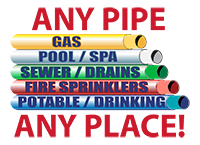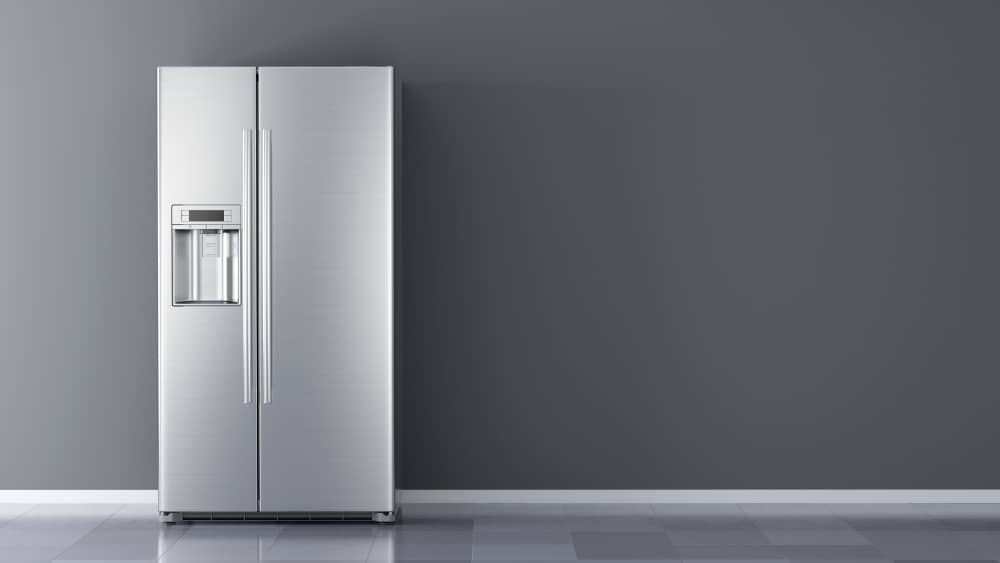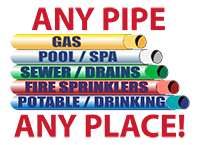The refrigerator is an underappreciated worker inside the home. If your refrigerator is not cooling or is malfunctioning, it’s going to have a significant impact on your entire household.
While we can expect refrigerators to run with no problems for a long time, they will present some issues now and then. The issue of the fridge not cooling happens to be among the most common ones that homeowners encounter.
So, how do you go about fixing it? There are different approaches you can take. Usually, you’ll need to take a cue from the issue affecting your refrigerator.
In this article, we’ll touch on the different reasons why your refrigerator may not be working as expected and the different fixes you can apply. Let’s get more in-depth on refrigerator repair below.
The Importance of Diagnosing Your Refrigerator’s Problem on Your Own First
The moment you notice your home or restaurant refrigerator not working, you may immediately think of calling a professional right away. We’re not saying that’s a bad idea. There are even scenarios where calling them immediately is smart because you cannot afford to have a malfunctioning refrigerator for any lengthy time.
Still, it’s worth checking the refrigerator on your own first. The main reason why that’s the case is because you can avoid an unnecessary expense.
According to American Home Shield, bringing in a specialist to diagnose the problem with your refrigerator could cost somewhere in the range of $50 to $90. If a big problem is found, you may need to pay additional hundreds of dollars to get your refrigerator fixed.
Turning to the professionals is wise and even recommended in many situations, but you can also benefit from performing some diagnostics yourself.
The Reasons Why Your Refrigerator Is Not Cooling and How to Fix Them
It’s now time to get to the different reasons why your refrigerator is not cooling properly and what you can do to fix them. To keep things better organized, we’ll highlight the potential issue and the corresponding fix right away.
The Refrigerator’s Thermostat Is Not Set Correctly
To get things started, let’s first talk about the issue with the easiest fix. The reason why your refrigerator is not cooling could be because the temperature is set too high.
This issue tends to pop up more with new refrigerators. Homeowners are so excited to start using their new refrigerators that they forget to set them properly. It’s only when they check back a few hours later and find the contents warm that they realize their error.
You also cannot rule out the possibility that something inside the refrigerator hit the thermostat and changed its current setting.
The Fix
An incorrectly set thermostat is easy to fix; you set the dial to what you want and let the refrigerator cool for the next few hours.
Now, if you found something leaning on the thermostat, that could explain why the temperature changed. Consider rearranging the contents of your refrigerator to prevent that from happening in the future.
The Refrigerator’s Condenser Coils Are Dirty
Your refrigerator’s condenser coils have an important job. The condenser coils work closely with your refrigerator’s compressor.
First, the compressor will produce hot air. That hot air will then travel through the condenser coils. As it does, the hot air starts to cool down and condense until it becomes a liquid.
That liquid is what we call the refrigerant, and it is crucial to keeping the refrigerator working. The refrigerant cannot perform its role if it’s not transitioning properly.
Basically, if the condenser coils are not working as intended, the entire refrigerator is going to suffer because of that.
What causes condenser coils to malfunction? Often, the issue is related to how clean they are.
Over time, condenser coils tend to catch debris. Those particles then stay on the condenser coils and prevent them from doing their job properly.
Another issue here is that you may not detect the problem right away. Unclean condenser coils don’t make an immediate impact. It may take some time before you finally notice that your refrigerator is not cooling like it should if the issue is related to the condenser coils.
The Fix
Check out your refrigerator’s manual and see where the condenser coils are. Often, they’ll be attached to a toe grill, and you can pull that toe grill away from the refrigerator. After you’ve exposed the condenser coils, you can proceed to clean them.
Using a coil brush is recommended for this job. Brush away as much of the caked on debris as you can to allow the condenser coils to work properly again.
The Refrigerator’s Condenser Fan Is Malfunctioning
We’re done with the condenser coils so let’s turn our attention now to the condenser fan. This component of the refrigerator is responsible for cooling down both the condenser coils and the compressor.
A malfunctioning condenser fan is going to make its presence felt quickly. If you’ve noticed that the interior of the refrigerator feels warm, the broken condenser fan is the likely culprit.
The Fix
Tackling this refrigerator-related problem is a bit trickier because you first must determine the extent to which the condenser fan is malfunctioning.
The issue could be that the condenser fan is dirty. Clean it first, then spin it manually. If the fan blades move with no issue, plug your refrigerator back in and wait for a bit to see if it starts to cool.
Now, if the fan blades did not move around well after cleaning, resolving the problem is going to cost you. The condenser fan is probably broken if the blades aren’t moving properly. Purchase a replacement fan and install that on your refrigerator so it can work again.
The Refrigerator’s Evaporator Fan Is Malfunctioning
A different fan could also explain why your refrigerator is currently having some issues. This time, the evaporator fan is what you need to take a closer look at.
The evaporator fan works on drawing air in over the coils. It’s also moving the air throughout the refrigerator. That includes both the freezer and refrigerator compartments.
Notably, the evaporator fan can malfunction, and your freezer will still be cold. The same won’t be true for the refrigerator compartment, though.
The Fix
Start again by cleaning the evaporator fan and then giving it a spin. Look closely at the fan blades and observe how they move. If they spin fine, try turning on the refrigerator again.
Labored spinning or a lack of movement altogether is a more troubling sign. That likely means that the fan motor is busted. You must replace the motor of the evaporator if you want your refrigerator to return to working order.
The Refrigerator’s Air Vents Are Blocked
Look inside your refrigerator, and you’ll spot some small openings along its walls. Those openings are the air vents. The air vents are essential to maintaining an ideal temperature inside the temperature.
The cold air must travel through your refrigerator, and the vents help facilitate that movement. They link the freezer to the refrigerator and allow for the cold air.
You need to keep those airways open if your refrigerator is going to maintain the right temperature. It’s easy to block those air vents without realizing you’re doing so right away.
If you suspect that the air vents have something to do with why your refrigerator is not cooling, look at the freezer compartment. Check out the frost buildup inside there. The frost buildup could be clogging the air vents and preventing the movement of the cold air.
The problem could also be items blocking the vents inside the refrigerator. This explains why overcrowded refrigerators tend to feel warmer.
The Fix
Rearrange the items inside your refrigerator. You should move the big water containers to the center.
You can also consider placing fewer items inside your refrigerator. The decongestion of the refrigerator interior should help improve circulation.
Addressing a problem with the freezer is not that difficult either. Simply empty your refrigerator and unplug it. Allow it to defrost before plugging it back in and using it again.
The Refrigerator’s Door Gaskets Are Not Sealing Properly
The refrigerator door keeps the cold air inside the appliance. To do that, the refrigerator door relies on items known as door gaskets. The door gaskets are those items you find lining the refrigerator door and their main job is to keep the cold air where it needs to be.
For a good chunk of time, you won’t need to worry about the door gaskets of your refrigerator. They are going to last for a long time.
Sadly, when the door gaskets do start to go, you cannot do much about them. Repairing them is not an option. You’ll know it’s time to replace the door gaskets when they start to look and feel brittle.
The Fix
Replacing the door gaskets is what you need to do as soon as the old ones on your refrigerator start leaking. The manual for your refrigerator should indicate the gaskets you need as well as how to install them.
The Refrigerator Is Not Level
One more reason why your refrigerator is not cooling could be because it’s not level. Because the refrigerator is not properly aligned, its doors may also not be closing all the way. The cold air could seep out because of that.
The Fix
Getting your refrigerator level will depend on how it’s set up inside your home.
If it’s sitting on a platform, adjust that to bring the refrigerator level. Without a platform, you’ll need to work on adjusting the legs instead.
The legs of your refrigerator may also have been damaged. You may need to slip a shim under one of the legs to get the refrigerator level again.
Is the Refrigerator Not Cooling a Sign That You Must Replace It?
Finding out that your refrigerator isn’t cooling can be troubling. Your mind may immediately jump to the worst-case scenario such as the appliance itself being broken.
So, is that the case? Is the refrigerator not cooling a sign that you’ll need to replace it?
To figure out the answers to those questions, you’ll need to evaluate the problems. Dirty condenser coils are not indicative of any major issue. A fan breaking down is also not a clear sign that you need to replace your refrigerator sooner rather than later.
Leaking door gaskets are different because they speak to the age of your refrigerator. As with water heaters, refrigerators are going to present more problems as they age.
Other components of your refrigerator, such as the compressor and control boards breaking, are additional signs of old age that you cannot ignore.
Simply put, a refrigerator not cooling is not necessarily an automatic sign you need to get a replacement. However, if the reason the appliance isn’t cooling is due to components like door gaskets, compressors, and control boards malfunctioning, then it may be time to make a new purchase.
How Long Can You Expect Your Refrigerator to Last?
According to SFGate, a standard refrigerator should have a lifespan of about 17 years, assuming proper maintenance. Of course, not all refrigerators are going to follow that trajectory.
Some may break down after about 10 years of service, while others can last for nearly two decades. To get the most out of your refrigerator, make sure to pay attention to maintenance and apply repairs and replacements whenever necessary.
When it comes to a refrigerator repair, you can handle it on your own or leave it to the professionals. When it comes to problems involving your pipes and plumbing, we at San Diego Plumbing & Pipelining are ready to serve. Contact us today to learn more about how we can help.









